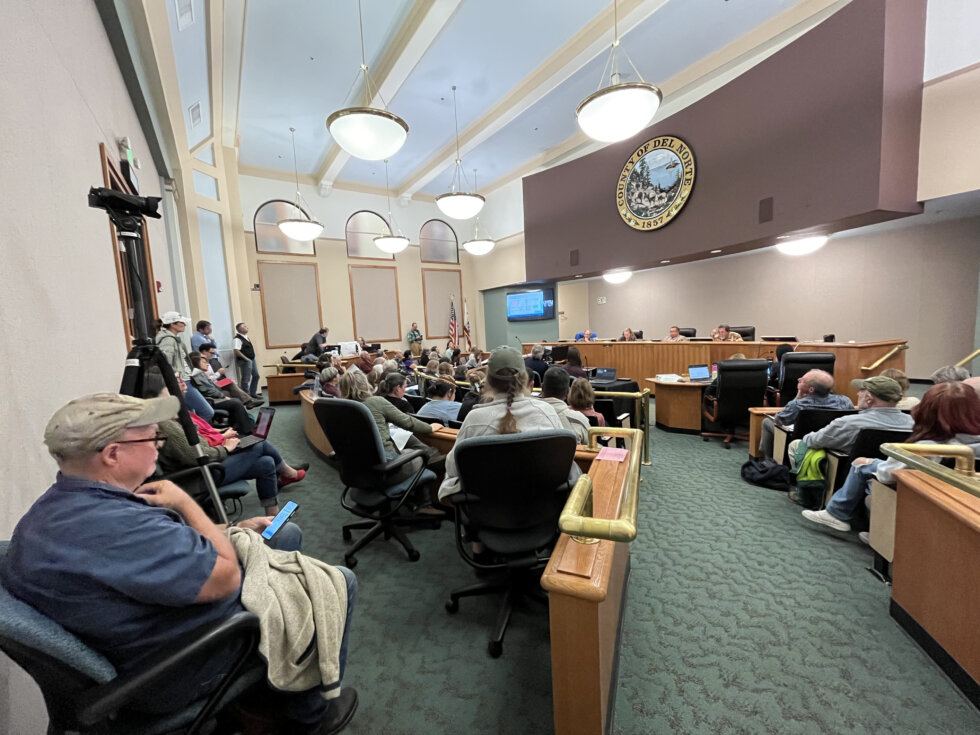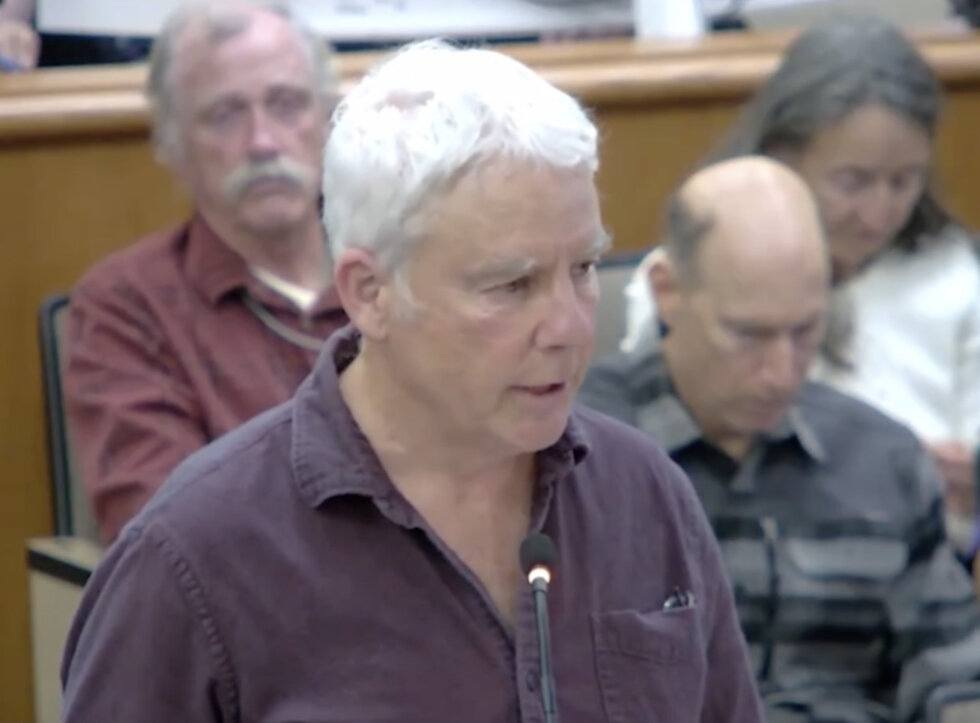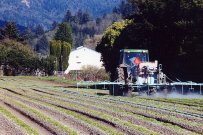Major Bay Area News Outlet Covers the Crisis for the First time

In Del Norte County on October 8, 2025, more than 70 people attended a meeting of the North Coast Regional Water Quality Control Board to tell the state: Enough is enough, stop allowing Smith River Easter lily farmers to poison the habitat and the people of the lower Smith River.
The epic meeting began at 6 p.m. and lasted five hours, yet few in the standing-room-only crowd left early. Water Board staff took nearly three hours to report to the four-member Water Board on state efforts to create an agricultural permit that would allow Smith River Easter lily farmers to continue polluting the river’s estuary and impacting local residents.
Smith River lily farmers apply some of the highest per-acre concentrations in the state of highly toxic pesticides to grow 90 percent of the wholesale crop of Easter lily bulbs.
Public testimony at the meeting was 100 percent in favor of ridding the lower Smith River of all uses of synthetic pesticides. Here is a link to a recording of the meeting. Public testimony begins at 2:32:20 with a presentation by three representatives of the Tolowa Dee-ni’ Nation, whose people have occupied the lower Smith River for nearly 10,000 years. Siskiyou Land Conservancy Executive Director Greg King follows at 2:52:00. (Read the text of King’s comments here.) Continue watching for informed and sometimes devastating testimony from scientists, NGOs, and residents of the lower Smith River who tell stories of being poisoned by the pesticides.

On October 19, the major Bay Area news site, SFGate, covered the meeting and the impacts of pesticide use on the lower Smith River. That story—titled “California’s Love for One Flower is Poisoning the State’s Last Wild River”—is here.

